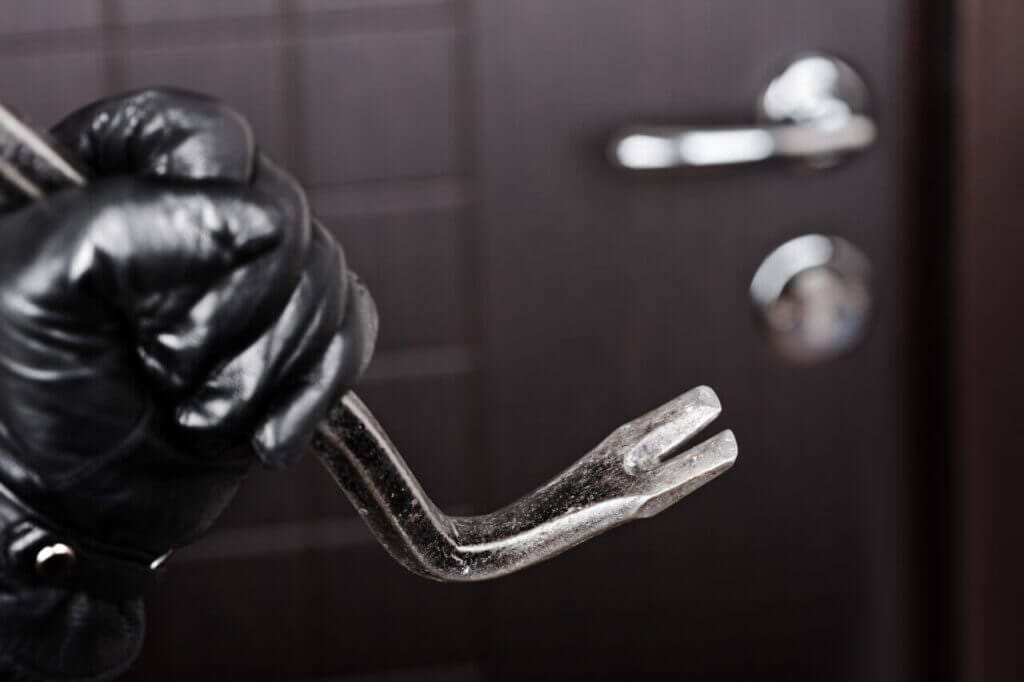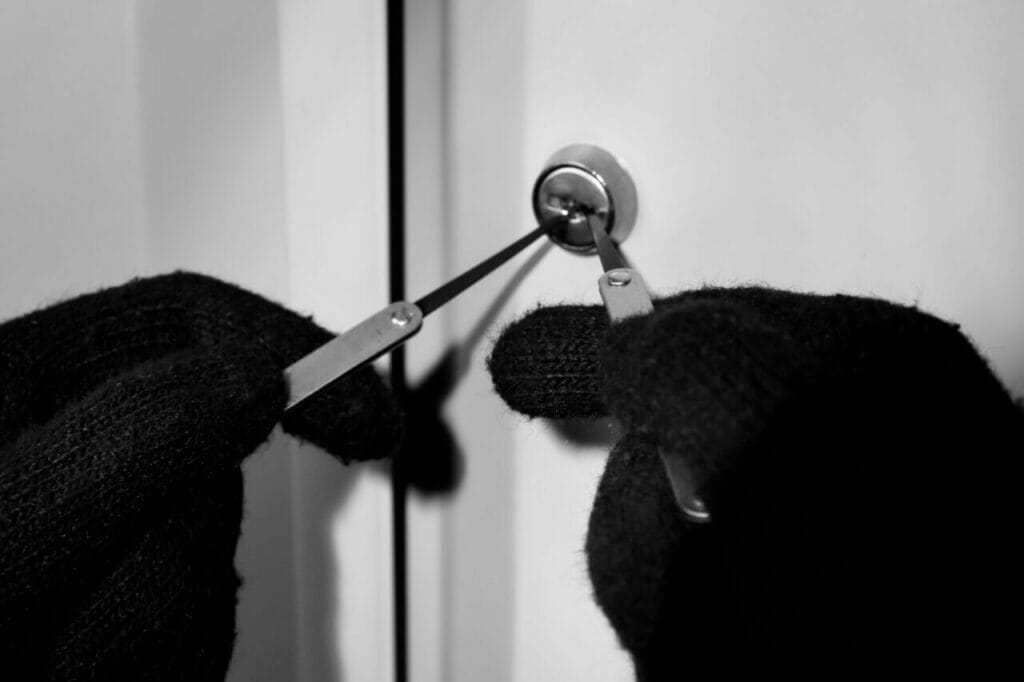Keeping the danger of burglaries in mind, it is extremely vital that you make sure that your home security system is well taken care of. Ensuring that your front door lock is secure is extremely important for keeping your home safe. That is why you should keep an eye out for any signs that indicate the signs of lock tampering and react promptly before a tragedy strikes.
That is why it is crucial to be on the lookout for lock tampering signs. It is possible that a burglar could have tried to tamper with your lock, but then faced failure or interruption before they gained access. In that case, it is very important to ensure that your locks are still robust to withstand the tampering attempts. Additionally, the attempt could have left your locking components weakened or damaged, which requires prompt lock repair.
Catching the possible signs that someone may have tampered with your locks can save you from a tragedy. Fortunately, there are various signs that you might be able to catch and with the right action, you can keep yourself safe. This article will go over
Lock Snapping
A good condition of your lock is undoubtedly the most crucial part of your front door security. However, unfortunately along with time, your lock can naturally start to show signs of degradation and resulting issues which need to be resolved promptly. Neglecting them can gravely compromise your home safety, so they are definitely something to garner your worry.
However, what should get you concerned all the more is your lock malfunctioning seemingly out of nowhere. You might find that your key suddenly does not fit properly in the lock. For example, it does not go in fully, takes hassle to come out, does not turn, etc. You may also notice your lock mysteriously not locking or unlocking properly, or it might take effort or make peculiar sounds while doing so.
Why might that be happening? If this change is sudden and you can not think of an occurrence that could have caused this, then chances are that this is sneaky work done by a malicious party. A tactic that could have caused this could have been lock snapping. It entails using a hammer in conjunction with a screwdriver in order to snap the lock cylinder into two halves, which then makes it extremely easy to forcibly enter your house. As this process inflicts damage upon the cylinder, you will experience difficulty in operating it.
So what can you do to rectify this problem, as well as prevent this from happening in the first place? As soon as you suddenly notice the above signs that indicate cylinder damage, it is time to replace the lock promptly. Then you can have an anti-snap lock installed, which incorporates a cylinder that stands against the attempts of snapping it.

Brute Force
Bruce force is among common ways for burglars to attempt to force their way into properties. Brute force lock tampering includes wide range of techniques that are hasty and forceful. The tools for them include hammers, drills, crowbar, etc. They are used to try to bash a lock with hammer, drill through a deadbolt, etc. Due to the nature of these techniques, there tend to be clear signs of the tampering left behind. While this is a scary and worrisome situation, the silver lining is that you can easily catch onto these signs.
Warped door components are among the common signs of brute force. Due to the physical strength put into trying to tamper the lock, you may notice bent deadbolts, latch, door frame, interior and exterior of the lock, etc. These components can get dislocated as well. You might also find that the frame feels loose or hard to move.
If either of these signs of wear down suddenly emerge without you being able to pinpoint any accident as the cause, your front door may indeed be suffering break-in attempts with brute force. You should immediately have your lock replaced with a high-security durable lock, as well as have your door repaired or replaced if it is damaged as well.
Lock Picking
Lock picking is an extremely common lock manipulation technique, which you are undoubtedly well-aware with due to how infamous it is. It is a useful procedure used by locksmiths, e.g. to help someone regain access to their house that they got locked out from. However, it is also among burglars’ favorite break-in tactics.
Sharp and small tools are used for lock picking. Commonly, flathead screwdrivers and small-sized picks are used to be inserted into the lock. Then the tool is carefully maneuvered to rake the pin tumblers, so that once all are caught, the lock is turned. Upon the success of this procedure, the door will unlock.
As this method does not use force, the inflicted signs can be easy to miss or not be formed at all. However, due to the sharpness and nature of the tools used for lock picking, the procedure might leave very fine scratch marks on the keyhole and shiny metal edges surrounding it. These can be told apart from your own key scratches due to them being more fine than those of your key. These scratches can also be observed upon the pins.
If you notice your keyhole to be surrounded by such tiny unidentified marks, then big chances are that you are observing the aftermath of a lock picking attempt. You should definitely have your lock inspected.

Lock Bumping
Lock bumping is a method that has its development credited to locksmiths. This is inherently an honest method to help those in distress with their own locks, but unfortunately, it is commonly used by burglars as well.
Lock bumping is a technique in which a bump key is used to manipulate a pin tumbler lock. But what even is a bump key? Also known as a 999 key, it is basically a dummy key with a special design that has its teeth filed into sharp points, making it resemble a saw. The key is inserted into the lock with the saw-like teeth to manipulate the pins and a hammer is used to bump the key forward into the lock. If completed successfully, this procedure aligns the pins, turns the lock and opens the door.
As this method requires force, there might be signs of bumping left behind the process. This may include the key being unable to be inserted into the key properly, not turning at all, requiring a lot of effort, etc. These symptoms would result from the force put into the cylinder in attempt to manipulate the pins. You may also be able to catch dents and nicks around the keyhole and the pins as the result. As bumping inflicts more force than lock picking, these sort of physical signs tend to be deeper than those left by lock picking.
If your lock has been attempted to be bumped, it is crucial to have your lock replaced with a high-security bump-resistant lock as soon as possible.
Do You Think Your Lock Has Been Tampered? Call a Locksmith Right Now
The signs of a failed lock tampering attempt are not always obvious. However, sudden changes like dents and scratches on the lock and door components can be a strong indication of lock tampering techniques like lock picking, bumping, brute force, snapping, etc. As soon as you suspect that your lock has been tampered with due to noticing these signs, you should immediately call the services of a locksmith to keep your house safe from intruders.
Give a call to our locksmiths in Brampton, who are ready to assist with optimally securing your house. We can do a thorough inspection of your lock and ensure that it is working in a robust condition. Additionally, we can help upgrade your lock if your current one is not protecting you securely enough, as well as conduct any repairs for existing locks that are necessary to keep them working in an excellent condition.
